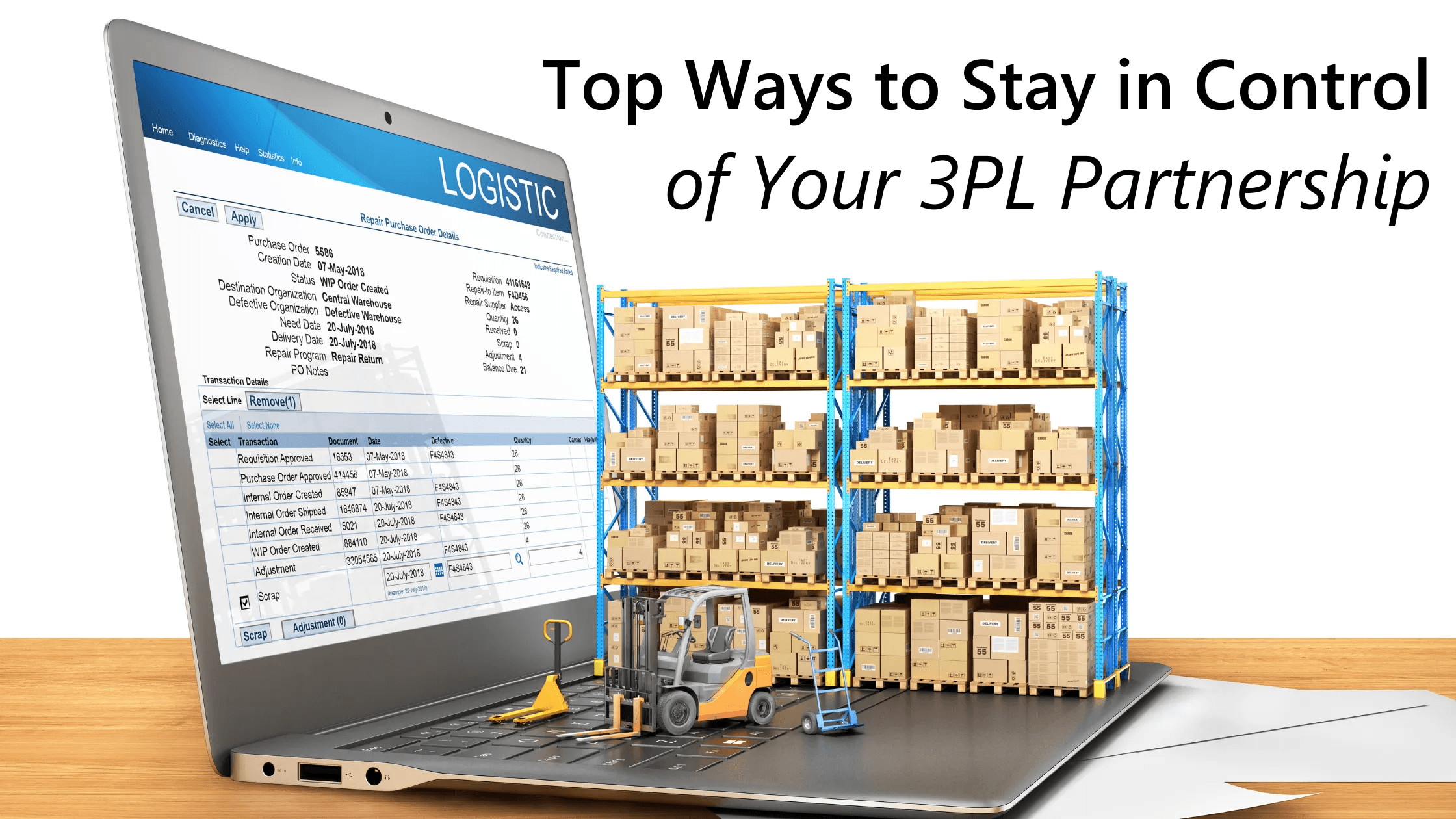

When you’re outsourcing key logistics functions to a third-party logistics provider (3PL), it’s important to have a system in place to track and measure their performance. Whether they’re managing your warehousing, transportation, or entire supply chain from end to end, your company needs a 3PL that can keep up with your supply chain demands.
However, it can be tricky to figure out the right approach to maintain consistent logistics performance and successfully meet your organization’s goals when such important core functions are outsourced. By establishing the right metrics to focus on and analyzing data over time, shippers can gain actionable visibility into their 3PL’s performance and further improve their logistics network.
When done right, the data that comes from your 3PL partnerships should build upon itself. With complete data, your business can also develop better benchmarks, which will allow you to compare your 3PL to competition more accurately. If your supply chain has inefficiencies that need to be addressed, or you’re losing money due to poor planning, you shouldn’t be left in the dark. You and your 3PL partner Share this responsibility.
To effectively monitor your 3PL partner’s performance, it’s essential to define the key performance indicators (KPIs). These metrics will act as your compass, guiding you towards a successful partnership. Consider aspects like on-time delivery, order accuracy, inventory accuracy, and customer satisfaction. By setting measurable targets, you can easily evaluate your partner’s performance. Here are some ways to closely follow and assess critical KPIs that hold your 3PLs accountable, stay in control of your partnership, and ensure you’re getting the best service possible.
Service Reports
Timely, valuable service reports provide one of the most effective ways to measure your 3PL’s performance and verify that they’re living up to your expectations. Every company is unique, so the metrics you choose to track should reflect what’s most important about your 3PL’s service to your business.
With that being said, here are some of the top benchmarks you should be watching to get the best sense of how your 3PL is doing:
With that being said, here are some of the top benchmarks you should be reporting on to get the best sense of how your 3PL is doing:
1. On-time deliveries
No one wants to disappoint their customers. Every time an order arrives late, it puts that customer’s business at risk. By measuring the percentage of your deliveries that are on time, you can know whether or not your 3PL is on schedule.
2. Inventory management
Is your fulfillment partner properly planning for and protecting your inventory? If your products are misplaced, damaged, or stolen, you could face some serious inventory shrinkage costs. While some may view this as an inevitable part of the business, you must monitor inventory accuracy to prevent these issues from piling up and affecting your company’s long-term profitability. This is especially important when it comes to any products that require special storage and handling procedures.
3. Order accuracy
Returns can be expensive and frustrating for you and your customers. If too many people have to send your merchandise back because they received the wrong item or there were missing parts, your bottom line will be the first to show it. No 3PL is perfect, but your partner should be keeping the mistakes to a minimum. As for the returns that occur, no matter how efficient your logistics partner is, your 3PL must report on what manages to slip through the cracks and use that information to make key improvements.
Scorecards (be sure to do them right)
Do you think your 3PL would score well when put to the test? Using a 3PL scorecard, you can grade how effective your partner is across a wide range of logistics functions. However, if your company decides to choose this method, you’ll need to understand some of the typical mistakes that shippers can make when taking this approach.
For one, unfortunate problems like shipping delays often occur due to a chain reaction within another link in the supply chain. So, shippers need to include a process that takes each party into account to avoid incorrectly placing blame. Another thing to keep in mind is the value of creating a scorecard that’s realistically manageable for your business and your 3PL.
If you try to force too much onto one scorecard, you’re only going to be left with an overwhelmingly detailed list of metrics that your partner won’t want to maintain, and you won’t want to review. With efficient, transparent grading, you’ll enable your logistics partners to improve their service, so it’s up to your standards.
Review Meetings
Hosting review meetings is another great way to deal with existing hurdles, discuss strategic plans, and ensure you’re getting the ROI you need from your 3PL. After all, working with a 3PL is an investment.
Before you sit down and start diving into the nitty-gritty, you need to establish what you know about the partnership, what your 3PL has accomplished, and what you want them to move forward with. Review meetings are critical in fostering business relationships because they allow companies to align their strategic vision and give credit where it’s due.
The success of the review hinges on how informed you are ahead of time, which is why it’s also crucial that you’re well prepared with accurate, up-to-date data regarding your 3PL’s performance. This extra bit of effort will ultimately help you and your logistics partner stay focused and cover what matters most.
As you analyze what your 3PL is doing right and what they need to improve upon, you’ll start to become an expert on the numbers. The entire purpose of a review meeting is to identify honest business insights and provide key takeaways to strengthen your collaboration and lay out a path for your provider to deliver optimal results.
In Summary
Whether you craft service reports, employ scorecards, host review meetings, or utilize a combination of all three, we believe that implementing practices like these will let your company maintain control and turn your partnership into a sustainable, competitive advantage. Remember, a 3PL partnership should be a collaboration, not a one-sided affair. Engage in open and honest communication with your partner. Share your goals, challenges, and expectations to ensure that they align with theirs. By fostering a collaborative relationship, you can work together to improve performance, address any issues promptly, and enhance your overall supply chain efficiency.
Tracking and measuring your 3PL partner’s performance is key to ensuring a successful and efficient operation. By establishing clear performance metrics, conducting regular performance reviews, leveraging scorecards, and fostering a collaborative relationship, you can stay on top of your partnership’s progress. Remember, a well-monitored partnership leads to better supply chain visibility, customer satisfaction, and ultimately, business success.